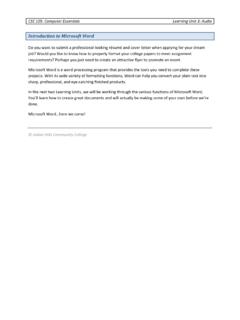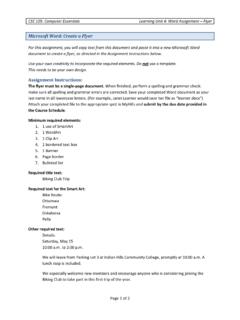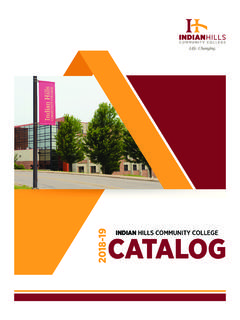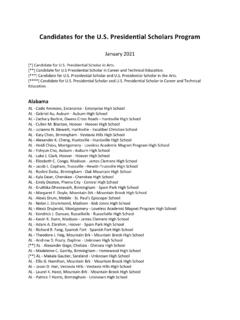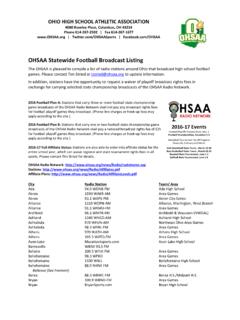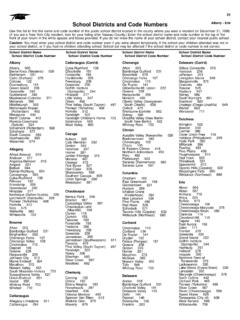Transcription of An Introduction to Public Speaking
1 SPC 101: Fundamentals of Oral Communication Learning Unit 3: Handout Page 1 of 13 An Introduction to Public Speaking Public Speaking is one of the most feared things for many people in fact, some Public surveys show fear of Public Speaking as higher than fear of death. It boggles my mind that people are more afraid of ten minutes in front of a group of people than they are of the great unknown! But, then I m a little weird in that I actually enjoy Public Speaking and being in front of an audience. It probably has to do with my love of theater and performance that makes me not afraid of being in front of an audience.
2 Despite my lack of fear about Public Speaking situations, I have never been able to conquer the nerves and anxiety that come with almost any speech situation that I ve been faced with. Communication instructors aren t here to make you excellent Public speakers. Instructors try to take you from where you are and give you some skills to become a better Public speaker and hopefully eliminate some of the anxiety you may have about Public Speaking . It is my personal philosophy that anybody can give a speech if they know some basic techniques so let s get started on the components of a speech which will make you a successful Public speaker.
3 Four Types of Speech Delivery There are four types of speeches that most speakers utilize in delivering a speech. 1. Extemporaneous speeches are speeches that are carefully prepared and practiced by the speaker before the actual Speaking time. A speaker will utilize notes or an outline as a guide while they are delivering the speech. The notes or outline will usually include any quotes and sources the speaker wants to cite in the presentation, as well as the order the information in the speech should be delivered in. The speech is delivered as if the speaker is having a conversation with the audience.
4 Since the speaker is not reading the entire speech, the extemporaneous speaker uses the notes as a guide only a sort of memory trigger and the speaker will also be able to respond to the audience since her head isn t trapped by reading every word on a paper. This is the type of Public Speaking you should strive to use in Fundamentals of Oral Communication for your informative and persuasive speeches as this is most practical type of Public Speaking the type you are most likely use in a real life situation when you might be asked to give a formal presentation.
5 It used to be a pretty standard technique of putting your notes or outline on notecards those 3" by 5" recipe cards. The idea was that the palm of your hand can hold 3 by 5 inch cards and they won t be distracting to an audience in fact, if you hold them just right, an audience almost can t see what is in your hand. Since the cards are relatively small, you would need several note cards for a ten minute speech (probably around five at least). I tend to have a Murphy s Law sort of experience is I speak off of note cards they can be in the right order when I m at my seat but by the time I get to the podium to speak one will be in the wrong order or worse yet, it will be gone entirely zapped into the ozone!
6 With the advent of computers, I find it is easier for me to use a single sheet of computer paper with an outline or list of notes to speak off of. I recommend that students use what they are comfortable with to speak off of. So, for this course, use either note cards or a single sheet of computer paper for your presentations. SPC 101: Fundamentals of Oral Communication Learning Unit 3: Handout Page 2 of 13 2. Impromptu speeches are speeches that are delivered without notes or a plan, and without any formal preparation they are very spontaneously delivered.
7 This is one of the most nerve wracking situations for most students to find themselves in because there isn t a plan or agenda to follow they just have to get up and speak without any thinking time. They are afraid of not knowing what to say when they get up in front of the audience so they might make a fool of themselves. If this type of Speaking situation makes you nervous, you are not alone! The reality is that this is the type of Public Speaking you are the MOST prepared for. Your daily life is filled with impromptu experiences and conversations.
8 Every phone conversation, exchange between you and a loved one, and discussion amongst friends is impromptu by its very nature even if we practice our conversations, they are still impromptu in their delivery. So, while most students are nervous about impromptu speeches, they are the type they are the most prepared for from their daily experience. 3. Manuscript speeches are speeches that are delivered with a script of the exact words to be used. If they have to give a speech, most students prefer to have every single word in front of them so they can basically read the speech to the audience.
9 While this is very reassuring for a speaker and they feel like they won t forget anything if they have every word in front of them, manuscript Speaking is one of the worst traps to fall into for a speaker. The speaker who utilizes a complete manuscript will often spend more time looking at the script than at the audience. By doing this, the speaker is unable to react to the audience or respond to the audience members questions. Therefore, the manuscript becomes a trap for the speaker. 4. Memorized speeches are speeches that are committed to memory.
10 The speaker completely memorizes the text of a speech and then delivers the speech from memory without reliance on notes or an outline. This is a very fearful Speaking situation for most people because they fear they will forget what they had planned on saying when they get in front of the group and, they might make a fool of themselves in front of the audience if they forget what to say. This type of Speaking is not very common to daily living unless you are in a profession like acting. Most of us memorize very little in our daily lives we don t even have to remember telephone numbers since we have cellular phones!

